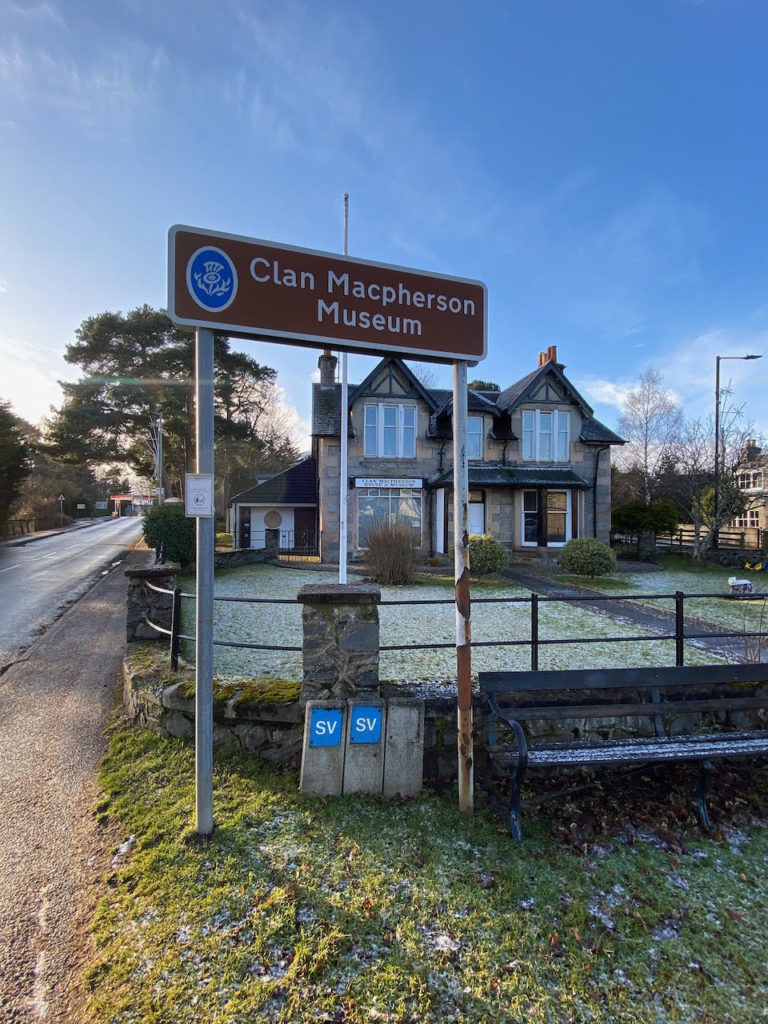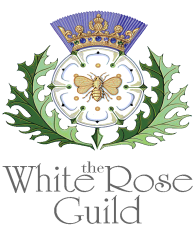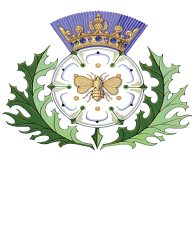The Clan Macpherson Museum first opened its doors in 1952 to house treasures already in the hands of individuals. Over the years it has grown considerably in both size and stature and now boasts a large collection of artefacts and other objects of historical importance. The collections are significant to the Highlands of Scotland and to members of the Macpherson Clan in particular. It is located in the village of Newtonmore, about 45 minutes south of Inverness in the heart of the Scottish Highlands. This area, called Badenoch, is the traditional heartland of the Clan Macpherson – nearby is the ancestral home Cluny Castle (now in private ownership), the Macpherson memorial cairn, and Cluny Cave, where ‘Ewen of the ‘45’ – the Jacobite clan chief – hid for 7 years after Culloden before escaping to France (a story not unfamiliar if you’ve read or watched Outlander!)
The current Chief of the Clan Macpherson is Sir William Macpherson of Cluny, the Clan’s 27th Chief. Members of the clan are fortunate to have their Chief living in Scotland; Cluny, as he is referred to, takes an active part in Clan activities and he has a strong presence in the Museum itself. A high point of the Macpherson year is the annual Gathering in August, when Macphersons from around the world come to Newtonmore to celebrate. Unique among clan gatherings is the march down the glen to the Highland Games, when clan members salute their chief and reaffirm their allegiance. A moving experience for participants and spectators alike.
The Clan Macpherson Museum is the home of the clan, and a warm welcome awaits you whether or not you are a Macpherson. Our curator, Ruiseart Alcorn, will greet you warmly as you arrive at the museum, and his knowledge of Macpherson stories is second-to-none. He is also a keen musician and might regale you with a tune. As you make your way around the exhibition you will learn about both Macpherson history and Highland history more broadly.
We have lots of good stories to tell, and we love sharing them with our visitors! Have you heard of ‘Macpherson’s Rant’, the fiddle tune? We have the fiddle that belonged to its composer, James Macpherson, which was smashed shortly before his execution in November 1700. Another character you’ll encounter is James ‘Ossian’ Macpherson (1736-1796), the translator and editor of the ‘Ossianic poems’ that took the world by storm in the 1760s. As well known then as Harry Potter is now, these poems single-handedly changed the course of art and literature and brought about the Romantic movement, and tourists flocked to the Highlands in search of its locations. Everyone who was anyone had opinions on these poems – from the Edinburgh Enlightenment philosophers like David Hume, to Thomas Jefferson and Napoleon. Oscar Wilde is named after its characters and Jules Verne (of Journey to the Centre of the Earth fame) wrote a novel in the 1870s that prominently features Ossianic stories. In the museum you can learn more about James and see a portrait of his painted on glass – a totally unique object!
The museum is a great treasure trove or objects and their stories, and it is small enough to make you feel the personal connection that so many of its visitors remark on. Whether or not you’re a Macpherson you’ll leave feeling like you’re one of the family, and there is a lovely selection of souvenirs for you to buy in its little shop. The museum also has a separate library and research area in case you’re interested in Macpherson or Highland history.
Dr Mairi MacPherson
Development Officer, Clan Macpherson Museum,
PhD, 18th-century Scottish Literature, History and Philosophy
(University of St Andrews)
Former Programme Leader for Literature
at the University of the Highlands and Islands.
Photos Credit: © Clan Macpherson Museum





